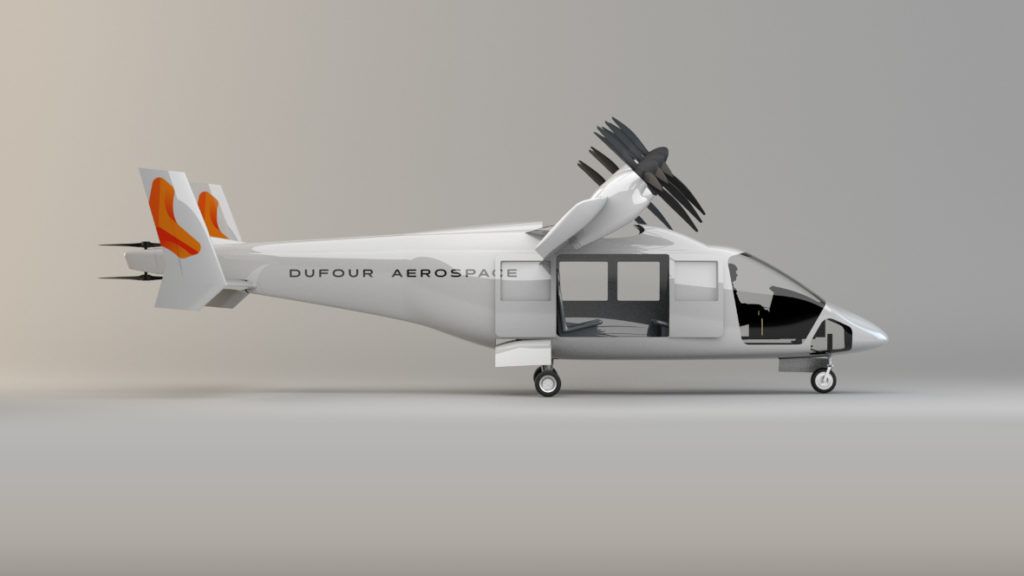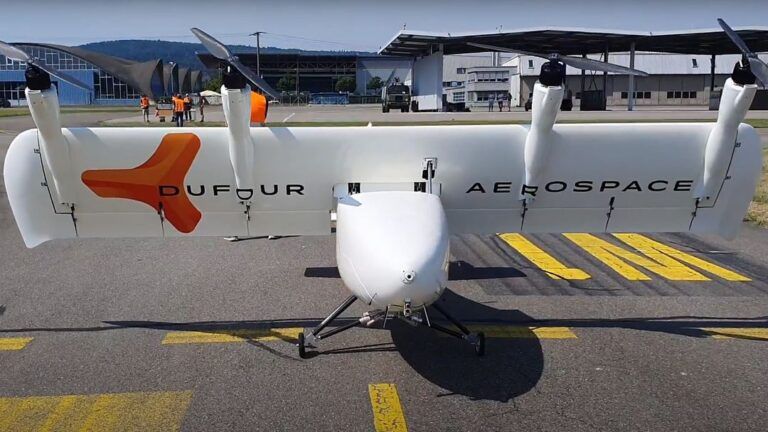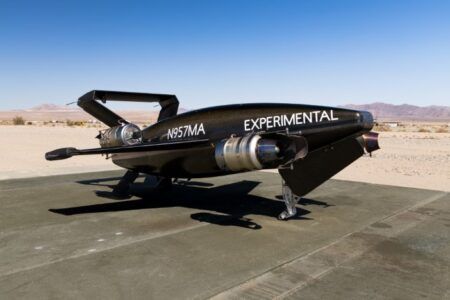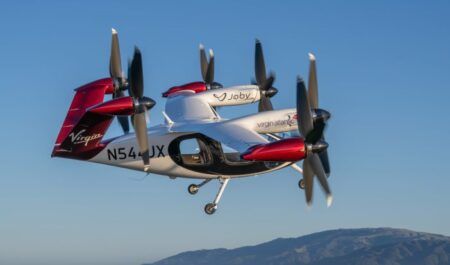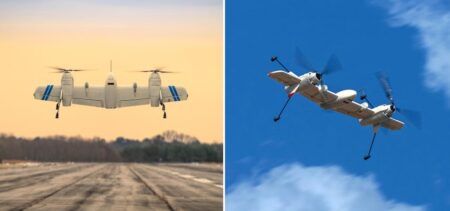Swiss firm Dufour’s latest hybrid-electric tilt-wing drone succeeds in transitioning from vertical take-off to horizontal cruise.
Switzerland-based Dufour Aerospace’s latest VTOL tilt-wing drone prototype has transitioned from vertical take-off to horizontal cruise for the first time during a test flight. X2.2 is the third prototype from Dufour that has demonstrated the tilt-wing transition and resulting aerodynamic benefits during flight.
Dufour is developing two tilt-wing VTOL aircraft, the Aero 2 unmanned drone and the Aero 3 passenger eVTOL. Deliveries of the Aero 2 drone are expected to begin in 2025.
Aero 2 will be able to carry payloads of up to 40kg, fly for up to three hours with a top speed of 170km/h (105mph) and will have a range of 400km (250 miles), or up to 1,200km (745 miles) with a smaller payload. Dufour has designed the hybrid-electric unmanned drone to be used for logistics, monitoring, topographical surveys, measurements or in public safety applications.
The company has sold 40 Aero 2s to launch customer Spright, the drone division of Air Methods, a US-based provider of helicopter emergency medical services, with options to buy an additional 100 aircraft. As part of the deal, Spright will assist Dufour in obtaining type certification for the unmanned Aero2 drone with the FAA.
Aero2 will be able to transport 40kg (88 lbs) of critical cargo, for example medical goods, over a distance of 400km (216 nautical miles) – or up to 1,200km (648 nautical miles) with a smaller payload.
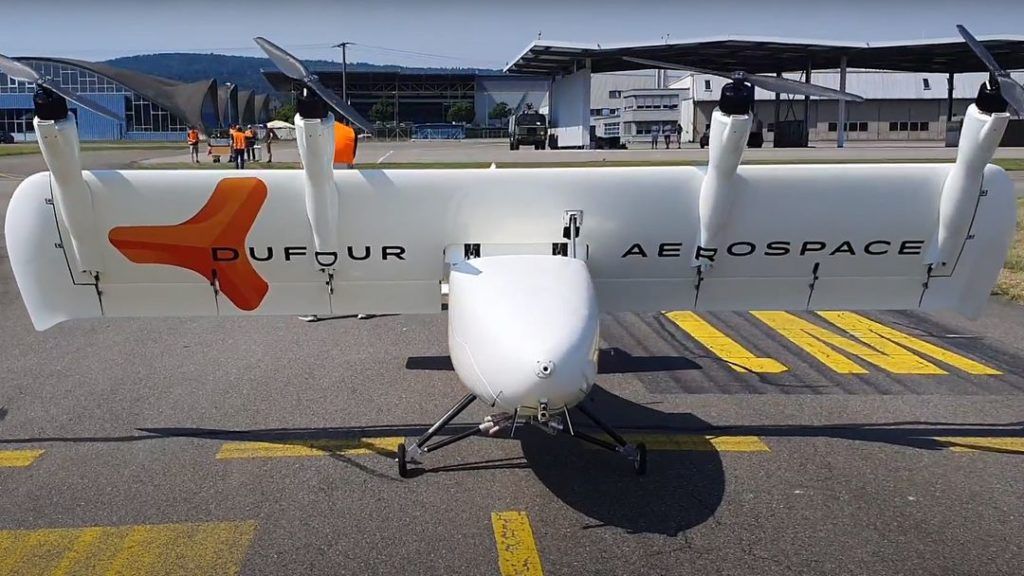
After X2.2’s recent successful transition test flight, Dufour is preparing to start series production and certification of Aero 2. The first aircraft is planned to be delivered to Spright in 2025.
Sascha Hardegger, chief operating officer of Dufour Aerospace said, “Being able to show the full transition of X2.2 is a significant milestone for Dufour Aerospace.
“X2.2 will allow our Spright and us to demonstrate the outstanding capabilities of Aero2 and its potential to revolutionize the middle-mile logistics of critical goods.
“Customers rightfully want to see flight demonstrations. Only what exists in reality counts. Dufour’s focus on the product is paying off.”
The company plans to ship an X2.2 prototype to Spright in October. This prototype is currently being completed and will undergo tests including system, ground and flight tests before being shipped to the USA.
The X2.2 prototype has a wingspan of around 5m (16.4ft) and a weight of 155kg (342 lbs). X2.2s will be used alongside the X2.1 prototype for further flight testing and envelope expansion during the rest of this year.
X2.1 served entirely for aerodynamic testing, for further knowledge during hover and transition and the associated refinement of the models and simulation. X2.2 is focusing more on automated flight and the expansion of the flight envelope. Flight tests with X2.2 started at the beginning of June in Dübendorf.
The next prototype X2.3 will be the first to use the hybrid-electric powertrain supplied by Suter Industries. Currently under development, it will have a wingspan of around 6m (19.7ft) and a weight of around 210kg (463 lbs) and will be identical to the production version in dimensions, weight and functionality.
Dufour plans to manufacture several X2.3 prototype aircraft to support use cases for partners around the world.
Aero 3 will use the same tilt-wing design and carry eight passengers up to 1,020km (635 miles) with an endurance of three hours and a cruise speed of 350km/h (217mph).
